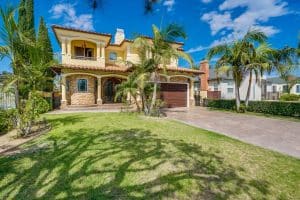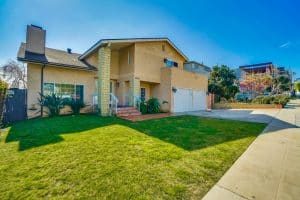Sober Living Resources for Sober Living Utah
Utah, a state located in the Mountain West region of the United States, is home to 3.5 distinct geographic regions. This beautiful state has 5 national parks, 45 state parks, and countless national historic sites and trails. The area has been inhabited for thousands of years by various indigenous groups, including the Navajo, the Ute, and the ancient Puebloans. In more recent times, it was considered part of New Spain and then later part of Mexico, before becoming the US’ 45th state in 1896.
Today, Utah is known for its natural beauty as well as its unique culture. Over half of the state’s population consists of Mormons, the majority of which are members of the Church of Jesus Christ of Latter-day Saints. In fact, the headquarters of the LDS Church is located in Salt Lake City, Utah. Though Utah has become more religiously diverse in recent years, the LDS Church exerts a profound influence on the culture of Utah, its politics, and everyday life.
The economy of Utah is diverse. Thriving industries include information technology and research, mining, government services, education, and transportation. Given the state’s natural bounty, it is inevitably also a popular tourist destination for individuals seeking scenic beauty and outdoor recreation. The population of Utah, according to the U.S. Census Bureau, is the second-fastest growing of all US states. Most notably, Utah also has the least income inequality of all US states.
While Utah might seem like an idyllic place on the surface, it is also a site for a great deal of the nation’s substance abuse problems. Countless drugs, from heroin and fentanyl to crack cocaine and crystal meth, are distributed throughout the state. Residents of Utah, from the very rich to the most destitute, are finding themselves suffering from substance addictions. Substance use disorders wreck personal health, destroy relationships, and devastate both families and communities.
The greatest risk, however, is overdose. In recent years, Utah has become a major victim of the country’s opioid epidemic. In 2018 alone, 437 individuals died as a result of opioid overdoses. The culprit behind the majority of these deaths is not heroin, but rather perfectly legal prescription opioids, such as fentanyl and oxycodone. Medical providers in Utah write an average of 57.1 opioid prescriptions for every 100 residents, which is significantly higher than the national average. It is no surprise, then, that substance use disorders run rampant throughout Utah’s population.
For individuals suffering from drug or alcohol addictions, it is crucial to get help. Fortunately, Utah residents with addictions have many options for recovery. Sober living homes inside Utah — and outside of Utah — can help individuals suffering from addictions of all severities. More importantly, they support individuals as they begin to pick up the pieces of their tattered lives and start all over again.
What Is A Sober Living House?
Sober living houses are residences where individuals with substance use disorders can live. When a person moves into a sober living home, they agree from the get-go to stay drug and alcohol-free. The purpose of these homes is to provide support and structure for individuals who are working to recover from the devastating effects of drug or alcohol addiction. To that end, sober livings engage in regular drug testing and enforce several recovery house rules to ensure accountability.
For individuals in early recovery, sober living homes can be an essential component of a recovery plan. They offer safe and trigger-free environments. A person’s environment is one of the most important factors during addiction recovery. When people quit drugs and alcohol, they are often extremely vulnerable to triggers. These triggers can range from emotionally disturbing events to simply being around drugs of abuse. Sober living homes are drug and alcohol-free; moreover, they provide emotional support for individuals who are confronting painful and challenging circumstances. Residents remove themselves from the chaos of their lives in addiction and immerse themselves in a new community.
The community aspect of sober living homes is also fundamental. Moving into a sober living home means acquiring a peer support network that is committed to recovery. Peer support is a critical factor in long-term addiction recovery. In fact, studies show that sober living home graduates have significantly higher sobriety rates even years after graduating. These lower rates of relapse can be attributed to the long-term peer support people develop in sober living houses. These relationships sustain people and offer moral support for years, even decades. Perhaps more importantly, they make life enjoyable!
Quality sober living homes in Utah emphasize not just physical abstinence from drugs and alcohol, but living meaningful and fulfilling lives. Few people want to get sober just to get sober; most people are unhappy because of how addiction has wrecked their relationships, health, and job prospects. With that in mind, sober living staff offer a great deal of support and resources to help residents find work, begin new educational journeys, repair and build relationships, and take care of long-standing issues. By the time an individual graduates from a sober living home, they will not only have the coping skills necessary for long-term sobriety, but they will be living a life beyond what they could ever imagine for themselves.
Sober Fun in Utah
It is possible to get sober in Utah; after all, it is possible to get sober anywhere. However, it is often recommended that individuals leave their home states during the initial state of addiction recovery. The rationale behind this advice is that an individual’s home environment is often filled with potential triggers. These triggers can range from neighborhoods where one used to pick up drugs to encounters with old drinking buddies. By making a fresh start in a new location, it is far easier to develop new relationships, new habits, and new mindsets, without being held back by one’s past life in addiction.
However, it is still important to emphasize that Utah is home to a wide variety of attractions and activities that sober people can enjoy. For individuals who have recovered outside of Utah and are returning, it is important to take advantage of all that this wonderful state has to offer. These activities can also be enjoyable for sober visitors to Utah.
While the term “sober fun” might sound laughable for people in active addiction, it is actually not as difficult as it sounds. By developing new coping skills in a sober living house, individuals can learn to have fun without the crutch of drugs or alcohol. Moreover, sober living homes provide people with friendships that make any activity potentially exciting and enjoyable. Below are just a few examples of ways that sober people can have a good time in Utah.
Natural History Museum of Utah
Utah’s Natural History Museum is home to more than 1.5 million distinct artifacts. Its exhibits include a paleontology section, an anthropology section, and a malacology section that contains rare mollusks. This museum regularly holds educational and recreational programming that makes learning about natural history fun.
Best Friends Animal Sanctuary
Utah’s Best Friends Animal Sanctuary is the nation’s largest no-kill animal shelter. This center contains more than 1,700 animals. Best of all, they’re all available for adoption. However, even for individuals who aren’t looking to adopt, the Best Friends Animal Shelter regularly offers tours and events, including bunny yoga. Whether you’re interested in adopting or just want to visit the countless horses, dogs, cats, rabbits, and birds — you’re sure to meet some new best friends here.
Clark Planetarium
Clark Planetarium uses the latest technology to hold cosmic light shows. The facility is home to the Hansen Dome Theatre, which utilizes 3D computer animation and digital projection to offer viewers a panoramic 360-degree experience. Their IMAX theatre also regularly displays the latest films. The Clark Planetarium regularly hosts astronomy exhibits and community programs for the public that are mind-expanding and exciting.
Gifford Homestead
The Gifford Homestead is a historic site located in Utah’s Fruita Valley. This Mormon settlement is perfectly preserved, allowing visitors to experience what life was like in this Mormon farmhouse at the turn of the 20th century. Rock walls, a garden, a smokehouse, a pasture, and a barn are all fascinating features of this century-old home. Moreover, visitors can enjoy locally made goods and purchase pioneer artifacts when they stop by.
Park City Mountain Resort
Tired of educational trips? The Park City Mountain Resort is the United States’ second largest ski resort. This important skiing destination covers 7,300 acres of mountain terrain and offers more than 330 distinct trails. It is regularly used as the training ground for the US ski team, and it hosted the 2002 Winter Olympics. For people who are feeling especially adventurous, night skiing is offered at some of the trails. This is surely one of the best ways of getting a rush even in sobriety.
Salt Lake City
Salt Lake City is surely Utah’s cultural capital. If you are visiting Utah, this city has countless opportunities for sober fun. Visit the Hogle Zoo, walk through the Red Butte Garden’s arboretum and botanical gardens, take a trolley tour, stop by the Utah Museum of Contemporary Art, or simply enjoy one of the city’s countless restaurants and cafes. This thriving city is home to a diverse and relatively young population, so there is always something happening here!
Benefits of Utah Sober Living Homes
Addictions are never cured overnight. This is why sober living homes are so essential. Sober livings provide long-term support and structure for individuals who are working not only to get sober but to rebuild their lives. The term “recovery,” after all, refers not only to quitting drugs and alcohol. It means beginning to lead a better, more joyful, and more fulfilling life.
This process takes time. For this reason, even people who have finished clinical addiction treatment programs are often advised to move into a sober living home afterward. Sober livings, while not clinical addiction treatment programs themselves, allow residents to take the time they need to further reinforce their recovery skills and develop their lives in a supportive environment.
24/7 Support
House managers and other sober living staff live on-site with residents. This ensures that all members of a sober living home have access at all times, day and night, to the support they need. Staff is available to help enforce house rules, answer questions, and address challenges as they come up. They are also always available to field questions from parents or other loved ones who may have questions about their child or the recovery process.
Quality Peer Support
Moving into a sober living home means acquiring a new friend group. Best of all, these new friends are all equally committed to recovering from drug and alcohol addiction. Substance use disorders are often known as diseases of isolation; under the influence of drugs and alcohol, most people find themselves isolating or engaging in conflictual behavior. Being around other people who suffer from the same condition can be healing in and of itself. Housemates provide advice and feedback, keep each other accountable, and make it easy to have sober fun.
A Bridge to the Outside World
Many people utilize sober living homes as transitional environments, especially individuals who have recently graduated from inpatient rehabs. Rather than simply jumping back into life in the outside world, sober living homes allow people to gradually develop their lives with a great deal of support and structure. As a result, sober livings can be effective bridges between acute treatment programs and the “real world.” This is essential since abruptly returning to one’s old life after finishing treatment can be a recipe for relapse. Attending a sober living home dramatically decreases these risks; in fact, studies show that long-term engagement in recovery programs drastically reduces relapse risk.
Life Skills Training
Sober living homes prepare residents for long-term sobriety by helping them develop coping skills and plans for dealing with common triggers. Moreover, they assist residents as they work to develop life skills that they may have neglected during their years of active addiction. Whether they need to find work, learn how to handle college classes, or simply learn better communication techniques, residents can rest assured that sober living staff and residents alike will help them develop these skills.
Leaving Utah for Sober Living
Utah is home to many excellent sober living homes. However, it should be kept in mind that the purpose of a sober living home is to offer a safe and trigger-free environment where residents can focus on recovering and building new lives for themselves. To that end, it is often helpful for addicts in Utah to change states entirely — at least during the initial most vulnerable stages of recovery.
California, which is only a day’s drive away, is an excellent place to make a fresh start. This health-conscious and open-minded state is a comfortable place for individuals who are in recovery. Like Utah, it offers a seamless mix of natural beauty and cultural oddities, so Utah residents will feel right at home. Moreover, Southern California is home to a unique type of sober living home: structured sober living. These homes offer even more resources and support than other sober living homes. Given that Southern California’s recovery community continues to thrive and develop, it is a popular destination for out-of-state individuals who are ready to make a fresh start.
Recovery is Possible at Design for Recovery
Design for Recovery is Southern California’s preeminent structured sober living home. Our property offers young men a supportive, safe, and trigger-free environment. As such, it serves as the ideal home base for men who are working to develop the life and the skills they need for long-term sobriety. Residents are fully supported as they work to address underlying issues, clean up the wreckage of their past, and make headway toward new careers and relationships. Our community continues to support alumni even years after they graduate.
At Design for Recovery, it is our philosophy that addiction recovery is about far more than mere physical abstinence. We are committed to helping residents develop a new set of values — or what we call a design for living. Residents strive for accountability, honesty, and integrity. Overcoming addiction means more than just quitting drugs and alcohol — it means becoming a better you. By taking positive steps forward every day and engaging with a sober community, Design for Recovery residents quickly find themselves living lives that are happy, joyous, and free.
If you are ready to take the first step toward a new life free of drugs and alcohol, reach out to Design for Recovery today. Contact us for a free and confidential consultation.
Frequently Asked Questions
A sober living home is a safe, substance-free residence for people recovering from addiction. It acts as a transitional housing option, bridging the gap between inpatient facilities and the real world. sober homes, usually located in quiet neighborhoods, help individuals reinforce their rehab lessons. They provide a cost-effective living environment and support sobriety. Sober living homes are peer-managed and expect residents to pursue better health and a substance-free life. They strictly enforce rules, with violations leading to eviction. Rules include signing a contract, attending support group meetings or outpatient treatment, and paying rent. Costs vary based on location and services.
The cost of residing in sober living homes in Utah can vary depending on factors such as the location, type of residence, available amenities, and the nature of the program. Monthly expenses range from $2,000 to $10,000. Some homes provide structure rather than a formal program, reducing costs. Utilities may be included or rationed. Rent is typically charged monthly, without requiring upfront payment. Resources like insurance, grants, sliding scale payments, and payment plans can help cover costs.
The length of stay at sober living houses in Utah are not fixed and can vary depending on the individual’s needs and the rules of the house. However, it is commonly advised to spend a minimum of 90 days in treatment and sober living before reintegrating into society.
Entering a sober living in Utah has numerous benefits for individuals in addiction recovery. These include:
- Safe and pressure-free living space
- Supportive environment promoting discipline and sobriety
- Reinforcement of rehab lessons
- Bridge between inpatient care and independent living
- Transition support from treatment to independent life
- Structured environment for regained stability
- Distance from triggers and temptations
- Connection with others in recovery for shared insights
- Job search/placement assistance
- Additional counseling
- Long-term residence option
- Improved physical and emotional well-being
Some sober living houses in Utah allow pets, while others do not. Pet-friendly homes offer benefits such as healing, joy, discipline, life lessons, unconditional love, and stress reduction. However, rules and regulations regarding pets vary by home, and residents must adhere to them if pets are allowed.
Read Further: Sober Living that Allows Pets
Yes, sober living in Utah does help residents find employment. These homes actively support residents in their job search and employment goals. They may require residents to be actively working or seeking employment while residing in the homes. Many sober living homes offer valuable resources and assistance to residents, such as resume writing, job application support, and skill training. Some homes even provide onsite job opportunities for residents as they transition out of the program. By promoting employment, sober living homes aim to help residents meet their financial responsibilities and develop a sense of accountability.
Visiting rules in a sober living home vary. Some homes may prohibit opposite-sex visitors or any drugs/alcohol. Approval is often required in advance, and curfews must be respected. Overnight guests are generally not allowed. Residents must show respect to housemates and staff. It’s important to inquire about specific visitor rules at each recovery home.
Design For Recovery also organizes regular events during which family members are invited to congregate with house members.
The rules regarding cell phones in sober living houses may vary depending on the specific sober living house. At Design For Recovery, we limit cell phone access for residents in the early days of their recovery. This gives them the opportunity to focus on their present circumstances and the present moment, cultivate real relationships with fellow house members, and look inward.
These policies may not necessarily apply to all sober living homes. Therefore, it’s recommended to ask each potential sober living house what their rules are regarding cell phones.
Utah Sober living homes offer alcohol- and drug-free environments for individuals maintaining abstinence. Expectations include:
- Safe community for physical, spiritual, and emotional growth with peer support
- Required sobriety, participation in meetings, and activities
- Guidelines like curfews, screenings, and respect for others
- Peer-managed homes supporting sobriety
- Live-in managers ensuring accountability
- Supportive community fostering sobriety and personal growth
- Varying costs and no-cost options available
he house rules for sober living homes in Utah may vary, but here are some common guidelines:
- Sobriety: Residents are required to maintain sobriety and abstain from alcohol and drug use while residing in the home.
- Meetings and Activities: Active participation in 12-step meetings, counseling sessions, or other recovery-related activities may be expected.
- Curfew: There might be a set curfew that residents need to adhere to, ensuring a structured routine and promoting responsibility.
- Drug Testing: Random or regular drug testing may be conducted to ensure compliance with the sobriety requirements.
- Chores and Responsibilities: Residents may be assigned household chores and responsibilities to maintain cleanliness and a sense of community.
- Respect for Others: Mutual respect and consideration for fellow residents’ privacy, boundaries, and recovery journeys are typically emphasized.
- Visitors and Guests: Guidelines regarding visitors and guests, such as limitations on visitation hours or prior approval requirements, might be in place.
- Financial Obligations: Residents are expected to pay rent and other associated expenses promptly and fulfill financial obligations.
- Supportive Environment: Creating a supportive and nurturing atmosphere, fostering personal growth, and encouraging peer support and accountability may be part of the house rules.
Staff members also enforce several sober living house rules designed to ensure a safe and healthy environment for residents.
Sober living homes provide a supportive environment for sobriety, offering:
- Substance-free space for real-world responsibilities
- Peer support from individuals with similar experiences
- Community support and encouragement
- Randomized drug and alcohol screenings
- Accountability through house rules
- Job assistance and connections to local employers
- Possible oversight from treatment providers
- Bridge between inpatient care and real-world transition
- Reinforcement of rehab lessons
- Safe space to develop habits and coping mechanisms
Amenities and services vary by sober living homes, so it’s best to inquire about specific offerings at each potential home.
The success rates of men’s sober living in Utah vary based on individual circumstances and dedication to recovery. However, research has shown that staying in a structured and supportive environment like a men’s transitional living significantly increases the chances of maintaining long-term sobriety compared to going directly back to independent living post-treatment.
Scholarships and financial aid are available for sober living. Options include:
- Grants for medical and living expenses
- Financial aid from treatment facilities
- Government grants from the Sober Living Foundation
- Healthcare grants for various medical needs
- No-cost options like halfway house programs
- State and federal funding, such as SAMHSA grants
Scholarship availability varies by program and location, so inquire about specific options at each sober living program.
Staying in a men’s sober living house long-term offers benefits for recovery:
- Smooth transition to daily life
- Ongoing support for lifelong recovery
- Reduces relapse risk by eliminating substances
- Eliminates triggers in early sobriety
- Provides structure and support
- Increases chances of long-term sobriety
- Offers job training and preparation
Benefits may vary by individual and program, so inquire about specific long-term benefits at each men’s transitional living house.
Finding the right sober living home can be challenging. Here are tips to help you:
- Determine your needs: Consider budget, structure, and privacy preferences.
- Research options: Look for local sober living homes and explore their programs and amenities.
- Visit and tour facilities: See if they meet your needs during a visit.
- Consider rules and structure: Look for consistent enforcement and adherence to house rules.
- Seek peer support: Choose homes with a supportive community of individuals with similar experiences.
- Look for job training and programs: Consider homes offering programs to aid long-term recovery.
Availability and offerings may vary, so research multiple options and visit facilities to find the best fit for you.


















